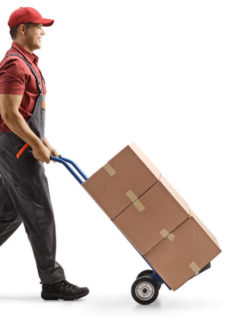In this blog series, we explore the future of logistics with some top experts. In the first part of this series, we sought to answer the question of how logistics centres will evolve in the city of tomorrow. For this second part, we dive into the warehouse itself and consider internal digitalisation and automation.
The digitisation and automation of warehouses is unstoppable. A lot of technologies already make it possible to mechanise logistics tasks. Not surprisingly, these technologies will play a key role at the heart of our warehouses in the future. So what can we expect? Read on and find out with our experts how best to prepare your warehouse for a future brimming with new software, machines and automation.
Ready for robots in the warehouse?
The warehouse of the future counts a very special new employee: the robot. In large warehouses today, they already replace a lot of humans when processing, picking, packing and transporting orders. What is quickly perceived as boring for a human, a robot or automated system performs with pleasure – 24 hours a day. This allows your warehouse workers to focus on tasks where they have more added value to offer.

Today's world already runs faster than yesterday's - and tomorrow's will be even faster. End customers also expect that speed when they place an order online. Hence the great success of robotics and automation. It represents a revolution in the logistics world that should help companies save time while ensuring a high level of quality. Because the more we automate, the smaller the number of errors in the supply chain.
Jos de Vuyst, CEO of Stow GroupRobots offer unseen many useful applications. Especially picking robots and AMRs can take over a lot of difficult and unergonomic tasks from humans:
- Picking robots have a fixed insertion in a warehouse. For example, they can select products from a pallet or from a plastic container and then place them in another container. They are a useful link within an automated order picking.
- Autonomous Mobile Robots (AMR) are robots that independently analyse the environment to adapt to it or safely move around in it. These ‘shuttle robots’ can therefore navigate a warehouse independently to move heavy loads, for example. They are much more flexible and are likely to eventually replace conveyor belts as you can see in the image below.
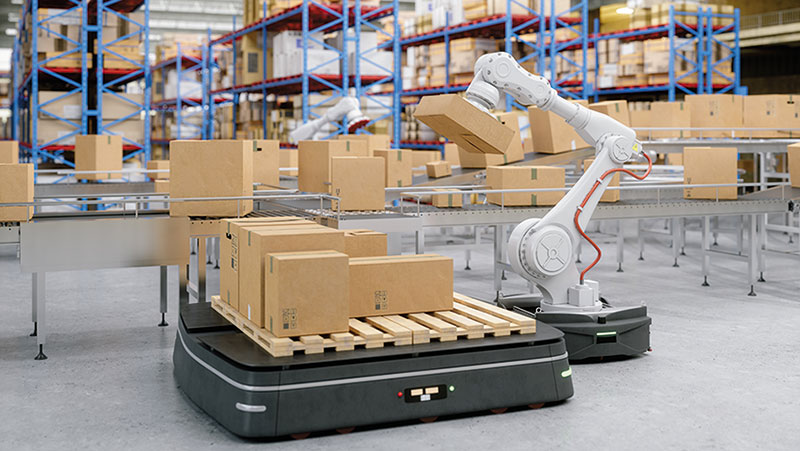
What benefits does automation offer?
Integrating robots into your warehouse can be a solution to make smarter use of your limited workspace. Shuttle robots are able to use parts of a warehouse that were little or not used in the past. For example, think of very large heights that are inaccessible to average forklifts. As a result, you increase your logistics workspace without increasing floor space.
Of course, it is difficult to predict in detail what the year 2050 will look like. Especially given the rapid pace of technological development. However, we see clear trends emerging… One such trend is, for instance, the integration of robots and automation outside the warehouse, to bring logistics closer to the end user.
For example, what would you say about autonomous, driverless vans? Or a new shared locker network where customers can autonomously pick up and return all their goods? These are all technologies that not only increase productivity and improve customer experience, but also reduce the environmental impact of the entire logistics sector.

Many of today's robotics software packages contain a layer of artificial intelligence (AI), based on machine learning. In time, these robots will know perfectly what tasks to perform without a human having to ask them. When we get to the point where this technology can also integrate deeplearning¹, robots will even become 100% autonomous and be able to perform their own maintenance tasks.
Jos de Vuyst, CEO of Stow GroupNew machines for more autonomy
Nowadays, many logistics tasks in a warehouse can already be performed by machines. Just think about picking orders, or packing products. In some warehouses, they even go so far as to have this entire process automated from A to Z. This ensures order picking where no person has to touch the goods. All you need is a driver driving his truck in and out of the warehouse.
In concrete terms, this means that machines are already capable of performing a number of tasks that an average warehouse worker still performs today. This often involves close interfacing with an internal Warehouse Management System (WMS). In the coming years, we will undoubtedly see this mechanisation increase further, all with the aim of making a warehouse even more productive. This gives warehouse workers the freedom to reduce repetitive or burdensome tasks and switch to new functions.

With growing staff shortages and higher customer demands, new technologies are making a big leap forward. Even in relatively small warehouses, modern technology is now finding its way. Technologies we are developing today at Reflex Solutions are even simpler, faster and more powerful in their use. New applications, such as RFID² linked to detectors, facilitate and increase the traceability of information - from order picking to the distribution of your products. Here, traceability is no longer a "nice to have" feature, but an essential requirement at an increasingly detailed level.
Baudouin De Martene, pre-sales consultant at Reflex Solutions
Towards smarter order picking and automation
Which machines and technologies will gain momentum in the coming years? Here are some big contenders in advance.
- Voicecontrol. Systems with voice control enable, among other things, completely hands-free order picking. Via a headset, the warehouse worker then receives instructions about picking locations, the number of products, the shortest route, and so on. It also allows easy collection of data about a warehouse: an important asset for those who want a reliable overview and forecasts of their supply chain.
- Pick-to-light. This technology should help order pickers select the right items from the shelves. Using an electronic display, they get information about an order (see image below). In the most advanced case, the package is automatically placed on a scale, which checks the weight of the various products to ensure that no picking errors were made.
- RFID (Radio Frequency Identification). Barcodes have traditionally been used in almost every warehouse to confirm a physical action taken by a warehouse worker (such as picking a product). RFID will allow people to go even further in the future. Stored goods will now be able to directly carry all traceable information.
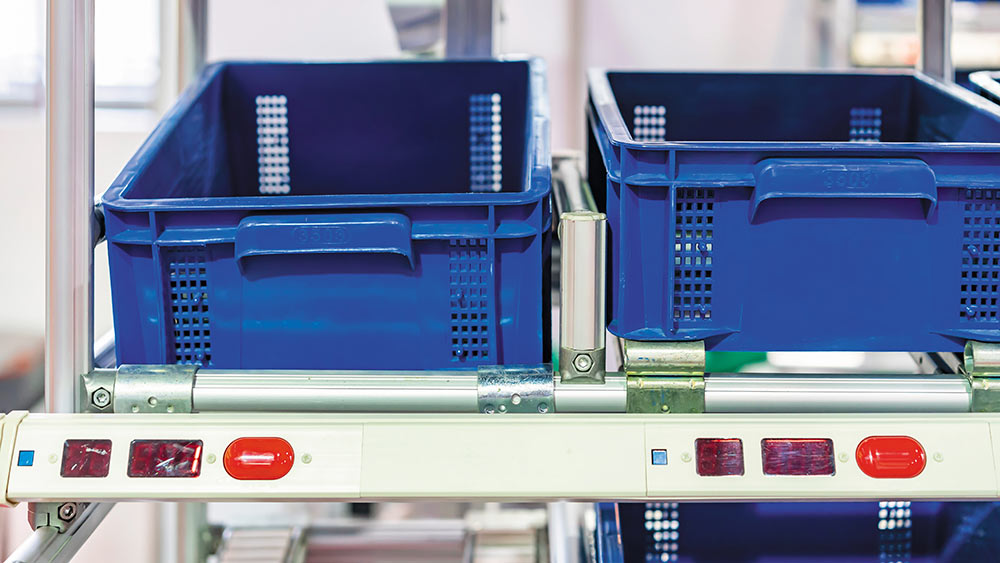
Increase your productivity with the Internet of Things (IoT)
The Internet of Things (IoT) refers to the set of devices that interact with other devices or systems via internet connections. A lot of households today already use it in their daily lives for their smart homes. Warehouses are also following this trend. Sensors connected to the IoT are crucial for automatically uploading data to various IT systems. This allows, for example, better anticipation of logistics problems or avoid unnecessary movements for warehouse workers.
Meanwhile, the IoT has many diverse applications. For example, are you already familiar with these examples?
- Machine Vision is a system where cameras detect the behaviour and movements of your staff. That information is then automatically collected and collated. For example, you can easily track a warehouse worker’s route. This is useful to determine optimal order picking, or to find out the location of any errors.
- A link between the IoT and a CSR strategy, for example to switch off lights or electrical appliances depending on usage or movement in a certain area. In this sense, the technology also responds to ecological objectives where one can use energy more sparingly.
- The data collected serve as instructions for warehousemen to perform a targeted action. A warehouse worker is then alerted at the right time to intervene: for example, to check the temperature in the warehouse or in a refrigerated truck. This minimises unnecessary actions. The warehouseman should only move when necessary.

The basic idea behind today's IoT is that it responds to small, very specific needs. But when you add up all these needs, these technologies give your logistics staff much more freedom and autonomy. Moreover, traceability and security are strengthened throughout the supply chain.
Adrien Soulier, Managing Director at WIIO
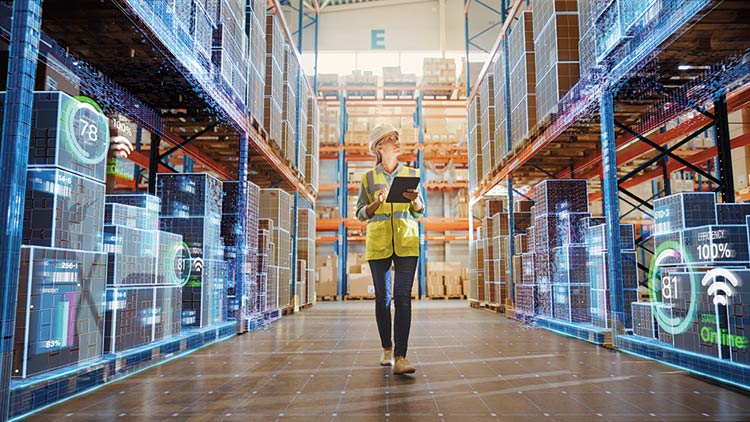
The logistics software of the future
In the logistics world, processing data will remain the biggest challenge in the coming years. Data and numbers are undeniably the black gold of the 21st century. With the right metrics, you can both better control costs and make more accurate forecasts. The goal is to optimise your processes, strengthen your competitive position and respond better to market needs. A real win-win!
The future of logistics software lies mainly in machine learning in the form of artificial intelligence (AI) and new algorithms. The data collected can then be exploited to their full potential. From the IoT to robots and automation, all these technologies will be able to provide useful data for logistics workers in the future. And the more data the software has at its disposal, the better it will be able to predict actions:
- Based on your marketing actions,
- Based on the size of your inventory,
- Based on your production and sales, e.g. related to the weather.

Because we can collect so much numerical data in a warehouse these days, it has become valuable to switch to software based on a data-driven or event-driven model. The idea is to enable your warehouse staff to react instantly, be much more agile and flexible, and adapt in real time to the specific situation your warehouse is in. Shorter responding to the ball say with targeted actions.
Adrien Soulier, Managing Director at WIIOThis is how to get more out of tomorrow’s data with automation
Spreading and expanding new technologies is one thing. In addition, getting all those technologies (and especially all that collected data) to communicate with each other and centralise it is certainly and equally important. WIIO’s IRIIS Software package, for example, is a step in that direction: it is a software solution that connects different systems, integrating them into the warehouse using a no-code system.
With no-code systems, software developers do not have to write code for the software, and therefore not for integration into a logistics environment. The direct result is that warehouses can move even faster in terms of innovation and flexibility.

Information from the field can now be updated in real time throughout the chain, which helps reduce administrative tasks. For example, one can now automatically check a parcel on a conveyor belt. In doing so, one can take photos, add labels, perform weight checks, etc. One then uses this information to manage the physical process (e.g. detect deviations, track returns), ensure the traceability of your goods, pass on information more easily to the customer or customer service, etc. The automation and standardisation of these processes is already in full swing and will undoubtedly accelerate in the coming years. Thus, all these systems and data can be exchanged between each other to the maximum extent possible.
Baudouin De Martene, pre-sales consultant at Reflex Solutions
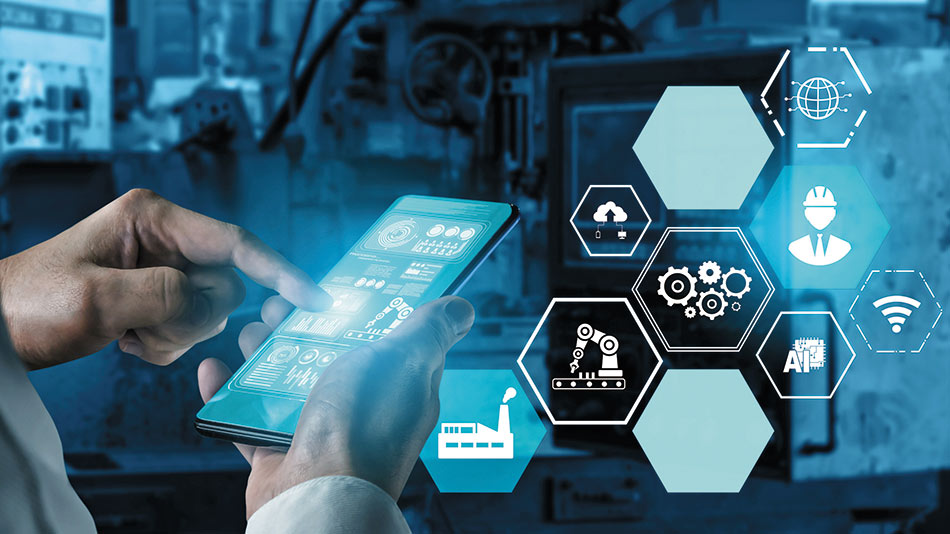
¹ Deep learning is a part of machine learning that mimics the workings of our brains with digital neurons. Deep learning includes algorithms capable of detecting complete patterns in data such as in speech, images or videos.
² RFID (Radio Frequency Identification) is a remote identification method based on radio frequency tags and detectors.













